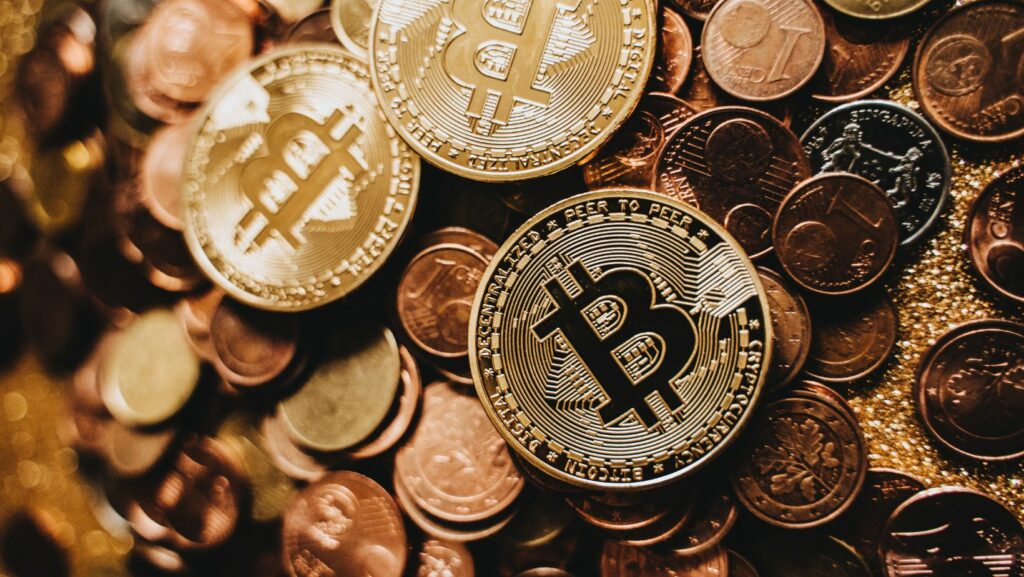
In the ever-evolving world of digital finance, a new trend is making waves: play-to-earn crypto games. They’re not just games; they’re an innovative blend of entertainment and investment that’s transforming the gaming landscape.
This rising phenomenon is capturing the attention of both gamers and crypto enthusiasts alike. It’s an exciting new frontier where virtual worlds and digital currencies intersect.
So, what’s behind this surge in play-to-earn crypto games? How are they reshaping the future of gaming and finance? Buckle up as we delve into the fascinating world of crypto gaming. This comprehensive guide will provide a clear, knowledgeable, and confident exploration of this emerging trend.
Understanding the Rise of Play-to-Earn Crypto Games
Delving deeper into this transformative trend, the rising popularity of play-to-earn crypto games finds its root in the intricate meld of investment opportunities and entertainment these games offer.
What Are Play-to-Earn Crypto Games?
Play-to-earn crypto games, at their core, offer gamers a unique proposition. Through these games, players earn a certain type of cryptocurrency as rewards for completing certain tasks or achieving specific milestones. Unlike traditional games where they’d merely earn virtual points or rewards, players here benefit directly from their time and skill investment. The accumulated tokens can then be traded, sold, or staked for potential gains in various crypto markets. However, it’s important to note that profitability isn’t guaranteed – it relies heavily on market forces and token valuation.
Historical Context and Evolution
While crypto games aren’t a completely novel phenomenon, the embedding of the play-to-earn model has propelled these games to unprecedented heights. Games like CryptoKitties stirred the initial craze, while ‘Crazytime’, an exciting crypto-based game, has solidified the persisting enthusiasm among players (check more on the Crazytime app). However, it’s Axie Infinity that proved to be a gamechanger. Originating from the Southeast Asian market, this Blockchain game with its play-to-earn model drew attention from global audiences, subsequently fueling the surge in popularity of this genre. This historical context showcases how the crypto gaming landscape has progressively evolved, adding a new layer to digital finance.
Key Components of Play-to-Earn Games
Play-to-earn crypto games hinge on several core components. Two of these components are blockchain technology in gaming and the use of cryptocurrency and tokenomics.
Blockchain Technology in Gaming
A key element in play-to-earn games, blockchain technology adds transparency and security to gameplay. It empowers players by storing valuable in-game assets in a decentralized manner. This permanence and security of data takes away the control from game developers, putting it in the hands of players, offering them full ownership rights of their in-game assets. Games like CryptoKitties made it possible for players to trade, sell, and even breed virtual cats, all verifiable via the blockchain.
Cryptocurrency and Tokenomics
Another vital component in play-to-earn games is the use of cryptocurrency and tokenomics. Games of this type often have their native token or in-game currency. Players can earn these tokens by completing certain tasks or achieving milestones within the game. Once earned, these tokens serve multiple purposes.

They act as a medium of exchange within the game ecosystem, they can be traded on exchanges for other cryptocurrencies or converted into fiat currencies. While we talk about crypto games, I would ask you to take a moment to check more on crazytime app.
Major Play-to-Earn Games in the Market
Through leveraging cutting-edge technology, specific games have pioneered the play-to-earn model, which has steadily gained momentum on the internet.
Overview of Top Games
Our focus now shifts onto notable representatives of the play-to-earn landscape, Prime among these are Axie Infinity, Decentraland, Cryptoblades, and The Sandbox.
- Axie Infinity, a game centered around adorable creatures known as Axies, pushes rewards in the form of Small Love Potions (SLP) tokens, which players can trade on various exchanges.
- Decentraland, a virtual reality platform built on the Ethereum blockchain, lets players purchase virtual land, creating exciting opportunities for earning.
- Cryptoblades, as a role-playing game, allows players to earn SKILL tokens by defeating enemies.
- Lastly, The Sandbox appeals with its interactive world where players can build, own, and animate voxel assets.
Case Studies: Success Stories
Among the many success stories of play-to-earn crypto games, standout examples include Axie Infinity and Cryptoblades.
Axie Infinity illustrates a clear success story, attracting players globally who have reportedly income streams from the game. This aligns with data from DappRadar, suggesting over $1 billion in sales volume for Axie Infinity in 2021.
Cryptoblades, on the other hand, has seen rapid growth. The game reached over 500,000 daily active users just a few months after its launch in April 2021, as revealed by DappRadar. Moreover, players have managed to derive consistent earnings, making it a popular choice within the play-to-earn sphere.
Opportunities and Challenges
Play-to-earn crypto games present numerous opportunities and challenges within the existing player and gaming community. As these interactive platforms continue to grow, they generate impacts across economic and regulatory landscapes. In this section, we examine two key aspects: the economic impact on players and the regulatory and security concerns prevalent in the sector.
Economic Impact on Players
Play-to-earn games drastically alter the dynamics of the gaming industry, putting earning potential directly in the players’ hands. Earning opportunities emerge, as players convert in-game assets and tokens into crypto earnings. In developing regions, where many players struggle with unemployment, these games have become important income sources. Axie Infinity, for example, thrives in the Philippines, providing a significant source of funds for its players. The game’s tokens can be converted into compatible cryptocurrencies, and subsequently into fiat currency, further adding to the economic impact of the play-to-earn model.
But, risks are inherent too. Players might lose money if the game’s token value diminishes or if it fails to gain mass acceptance. Therefore, it’s important for players to recognize and understand the economic challenges associated with these games, such as token volatility and market uncertainty.
Regulatory and Security Concerns
Play-to-earn crypto games operate within the regulatory gray zone of financial systems globally. Laws and regulations fluctuating across different countries can restrict a player’s ability to earn or cash out in-game assets, presenting a challenge for the gaming ecosystem. Furthermore, because these games are decentralized, securing and maintaining digital assets can be an issue. The lack of protective mechanisms as found in traditional banking makes players vulnerable to hacking and theft of their digital assets.

In addition, these games often lack clarity concerning the categorization of tokens used in gameplay. Some regulators may classify them as securities, resulting in stricter regulatory scrutiny. This presents a legal tug-of-war between the creative innovation of game developers and the regulatory systems trying to accommodate new financial interactions. Changes to regulations may be necessary for a universal consensus on the position of play-to-earn games in the economic system.
Despite these challenges, it remains worthwhile to explore the potential of play-to-earn crypto games in reshaping the gaming industry and the broader financial landscape. Players and regulators alike must navigate this novel landscape with caution and awareness of its exciting yet challenging opportunities.
Future Perspectives
Moving forward, play-to-earn crypto games are poised for increased influence in the global gaming industry. This growth, however, presents unique challenges and opportunities for both players and game developers.
Trends and Predictions for Play-to-Earn Gaming
Proliferation of play-to-earn games marks a new dawn in gaming. Driven by crypto economics, undoubtedly, their future is promising. Massive adoption of digital currencies, combined with an inexorable trend towards decentralization, suggests a bright future for these games. Yet, challenges persist. There’s a precise need for well-thought-out strategies to reduce the impact of token volatility, a major concern. For instance, companies might consider creating stablecoins unique to their gaming environment to tackle this issue. Looking ahead, it’s sensible to anticipate integration of blockchain technology in current gaming platforms. The expected influx of blockchain developers underlines the industry’s anticipated expansion.
Integrating Play-to-Earn Models in Traditional Gaming
Adoption of play-to-earn models by traditional gaming powerhouses isn’t far-off. Games are rapidly evolving, opportunistically accommodating technological advances. Embracing blockchain and cryptocurrency technologies might just revolutionize the gaming landscape. While integrating these novel concepts into traditional games might initially present challenges, determined developers can overcome such hurdles. Mainstream games could potentially reward players with unique tokens, exchangeable outside the game world. Players, therefore, earn while playing. Considerable arrival of such models depends on adoption of regulatory frameworks that protect players from risks associated with cryptocurrencies. Transparency, security, and fairness are the keys to seamless integration. Leading the charge, studios like Ubisoft are already exploring blockchain potentials in games. Consequently, the inevitability of viewing play-to-earn as a supplement, rather than an alternative, to conventional gaming monetization structures is emerging.
After integrating Play-to-Earn models into gaming, many players experience a greater sense of accomplishment. Some avid collectors even collect items as mementos. Custom Enamel Pins are a perfect example of this, as they are beautiful and meaningful.
You can customize enamel pins with the game’s logo and nickname. These unique pins represent your achievements and experiences in the game. Besides being a memento, a customized enamel pin can also be used as an accessory, adding a touch of style.
The custom enamel pins are beautifully crafted and arrived quickly. Hopefully, you’ll receive your exquisite pins soon, showcasing your gaming experience.













